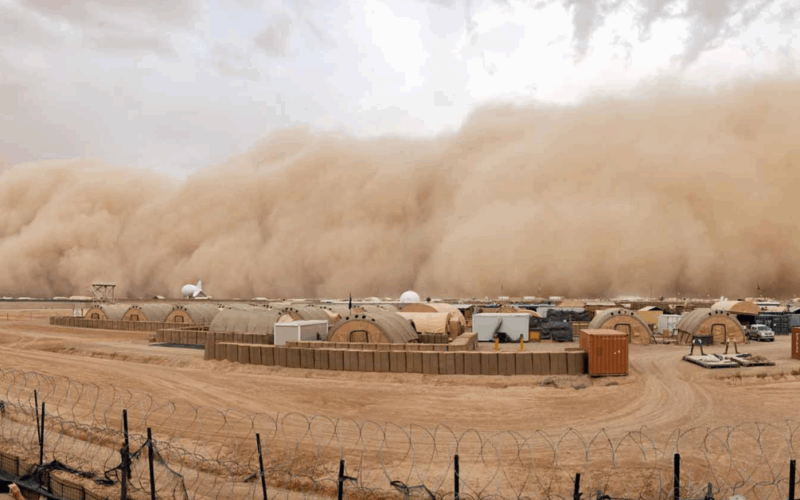Originating from thunderstorms, haboobs are characterized by towering walls of dust miles wide and thousands of feet tall. The National Weather Service (NWS) has shed light on how these formidable dust storms develop, their potential impact, and how residents can stay safe during such events.
The Mechanics Behind Haboobs: How They Form
According to Sean Benedict, a meteorologist at the NWS Phoenix office, haboobs result from strong downdrafts generated by thunderstorms. These downdrafts can strike the ground at speeds ranging from 50 to 80 mph and radiate outward, picking up loose dust and dirt found in arid lands and farm fields.
This process forms an advancing wall of dust that can travel great distances—sometimes up to 100 miles. The condition for a haboob to sustain itself largely depends on thunderstorm activity continuing to generate new downdrafts. If thunderstorm development halts, the dust begins to dissipate.
Sean Benedict explained,
“It’s all dependent on whether they’re moving through an area that’s prone to (generating) dust.”
Notably, the well-known dust corridor stretching between Phoenix and Tucson is especially prone to haboobs. These dust storms are not exclusive to Arizona; they can also form in other arid areas such as Nevada, New Mexico, and Texas.
Climate Change and the Future Frequency of Haboobs
Scientists acknowledge that the Southwestern monsoon seasons have intensified since the 1970s, a change linked to warming caused by human-induced climate change. While the monsoon’s bursts can increase dust storm activity, longer droughts and expanding arid zones simultaneously reduce rain frequency.
This paradoxical situation results in an increased likelihood for both severe droughts and intense dust storms. However, Benedict emphasized the uncertainty involved in projecting whether haboobs will become more frequent:
“The storms require a specific set of circumstances, and land use, such as farming, can affect how much dust gets picked up.”
According to the National Oceanic and Atmospheric Administration (NOAA), the Phoenix area experiences approximately one to three major dust storms annually, but not all dust storms qualify as haboobs, which are specifically linked to thunderstorm downdrafts.
Essential Safety Tips During Haboobs
The National Weather Service actively monitors conditions conducive to haboobs and issues dust warnings when visibility is expected to drop below a quarter-mile. Such warnings are critical for protecting motorists caught in these sudden storms.
Experts strongly urge drivers who encounter a haboob to take immediate safety measures:
- Pull off the road as far as possible
- Stop the vehicle safely
- Turn off the lights to avoid confusion
Benedict warned about the hazards of reduced visibility:
“People on the roads when they can’t see anything, they’re just gonna try to follow those tail lights in front of them, and run into parked cars. If there is an accident, you might not know and you just get these big pile ups. So it’s definitely very dangerous when the visibility drops down that low.”
Understanding how haboobs form and act can make a critical difference in preparing for and responding to these extreme weather events. For more detailed information and updates on weather alerts in the Phoenix area, visit sources like the National Weather Service and NOAA.
Learn more about the recent haboob event and other related insights at News Break.




